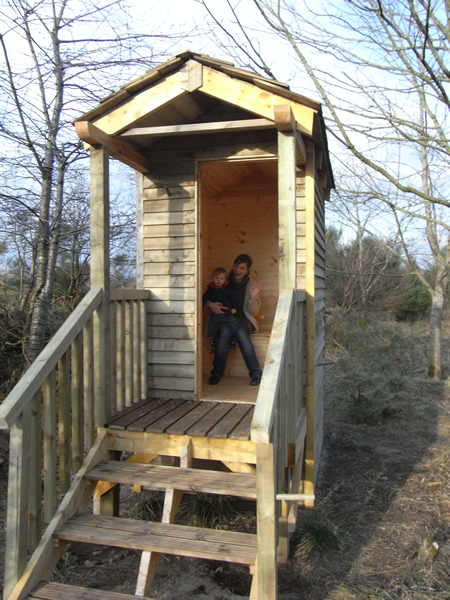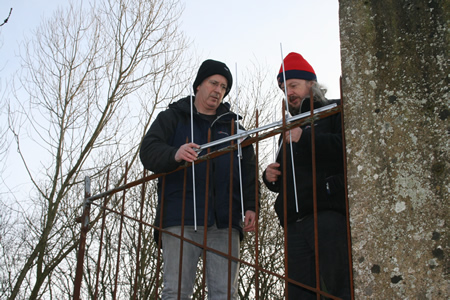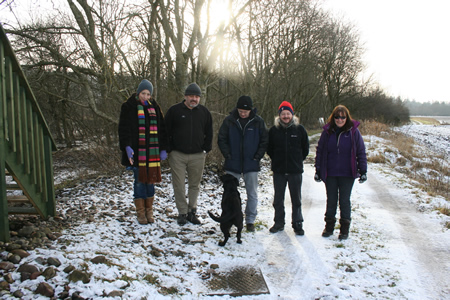These bulletin blogs represent news about Finavon and the South Esk, and my views as a riparian owner. They are not the views of any other organisation, nor are they designed to promote the interests of any individual or organisation other than Finavon Castle Water and factors affecting the fishery. Tony Andrews
I’ve been meaning to install a treebog at FCW for years, but it took my enterprising daughter Jo to research the concept, get a design and then commission Will Wells (of David’s Treehouse and footbridge fame) to make it. When you are enthroned there with a view of the woodland along Castle Beat the experience is a happy one! After all, treebogs are just composting loos, and have been around for centuries. The truth is that a human turd will decompose very quickly – and more importantly perhaps, without any pong – if it is given plenty of air and left undisturbed. That is what our treebog does: it is designed to provide a hygenic, odour-free toilet close to DTH (David’s Tree House). It is simply an essential facility on a modern fishery.
It is a treebog in two respects 1) It gives our Treehouse fishing hut (DTH) the necessary facilities 2) It provides high quality fertiliser for willows and other trees planted around the treebog thus screening it and ensuring privacy for the user.
This is what it looks like (a dry run of course!):
This is the FCW treebog, designed by Jo Andrews and built by William Wells (Scottish OAK). SEPA tell us that this is the first treebog recorded in Angus. At least it is the only one they have heard about!
Radio tagging project starts. The plan to radio tag 150 fish caught in the Usan nets between February and May has resulted in an operation to install radio receivers along the banks of the South Esk. Two of these receivers have already been put in place at Finavon. We had a friendly and informative visit from the MSS Montrose team when they came to install them.
This is Julian and Gordon of the Montrose team of MSS installing an aerial to pick up signals from radio tagged salmon, caught and tagged in the Usan nets, as they move upstream towards their spawning grounds.
This monitoring exercise is a vital step in us acquiring an understanding of the structure of the South Esk’s stock of salmon and of the ways in which the stock’s component populations use the South Esk catchment (main stem and tributaries). We hope that the project will identify where these different components spawn, where their juvenile components grow up and, eventually, at what level of abundance and general condition these populations are at present.
Another aspect of the radio tagging exercise is that some of the salmon caught and tagged in the Usan nets may be shown to head for other rivers, such as the Dee*, Tay* or North Esk. In fact we expect that to happen, because there has been a consensus view, held by managers and scientists for some years, that the Usan nets are a mixed stocks fishery. If the radio tagging project proves conclusively that populations of salmon from the three SAC rivers are being exploited, and that some of these populations are below their conservation level or deemed to be ‘fragile’, then to meet its international obligations, the Scottish Government will be forced to take action. But anglers and riparian owners on these rivers should not assume that only the nets will be affected by a government intervention. Indeed, I expect conservation measures to apply equally to nets and rods where stocks are at risk.
The scientists from the Montrose office of Marine Scotland Science came to Finavon to install their receivers for tracking radio tagged salmon caught and released in the Usan nets.
Left to Right: Jo – Moray – Tally Labrador – Julian – Gordon – Fran and Tony taking the photo. These nets are operating only on behalf of MSS and there is no commercial netting before 1st May when the 2012 Usan netting season starts.
My personal view is that the Marine Scotland Science project is overdue, but nevertheless hugely welcome. Any project that takes us away from guesswork and speculation towards evidence-based decision-making has to be right. If the effect of the work being done by MSS is to encourage us to become more professional in the way we manage our wild salmon and sea trout stocks then we will have taken a big leap forward. This monitoring and research may take a few years, but it will be worth the wait. I look forward to the day…
TA 5/3/2012


